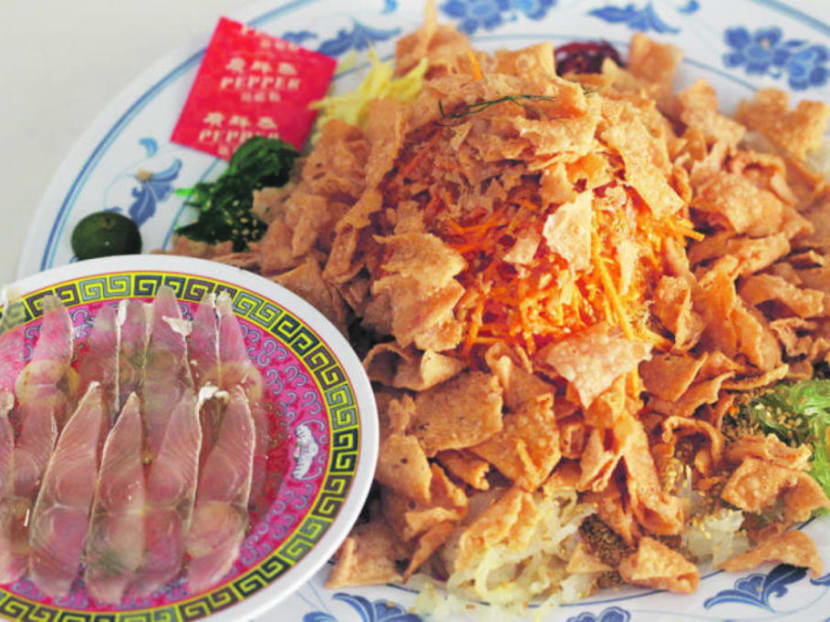Authorities issue new hygiene guidelines on handling of ready-to-eat raw fish
SINGAPORE — With days to go before Chinese New Year on Feb 12, the authorities have come up with guidelines on the handling, storing and processing of ready-to-eat raw fish, which is set to feature prominently at reunion dinners.

Group B Streptococcus infections had previously been linked to raw fish, which is found in dishes such as yusheng (pictured) or raw fish salad.
SINGAPORE — With days to go before Chinese New Year on Feb 12, the authorities have come up with guidelines on the handling, storing and processing of ready-to-eat raw fish, which is set to feature prominently at reunion dinners.
The aim is to prevent bacterial and parasitic contamination, and keep raw fish safe for consumption.
Dr Tan Lee Kim, Singapore Food Agency’s deputy chief executive officer and director-general of food administration, said on Monday (Feb 8) that ready-to-eat raw fish is considered a high-risk food as it does not go through a cooking process to kill pathogens and harmful organisms.
“Consumers who choose to consume raw fish must be aware of the risks that are associated with it,” she added.
Last year, cases of bacterial infections were associated with eating raw freshwater fish. Fifty cases of invasive Group B Streptococcus were reported by public hospitals in July last year — twice the average monthly figure of 25 from earlier in 2020, The Straits Times reported.
KEY RECOMMENDATIONS FOR INDUSTRY, CONSUMERS
The guidelines were developed by government agency Enterprise Singapore and the Singapore Standards Council, an industry-led body that reviews and develops standards in the country.
In the second quarter of this year, the authorities will work to raise awareness among industry players, such as suppliers and food retailers, about the guidelines’ requirements.
For industry players, they are recommended to ensure that frozen ready-to-eat raw fish is received at specific temperatures, among other things.
They are also recommended to maintain proper tracing and record-keeping systems, and educate consumers on how to retain the quality and safety of raw fish after purchase.
Here are some key recommendations for consumers:
Follow instructions on the package regarding handling and storage of ready-to-eat raw fish
If the ready-to-eat raw fish has expired, discard and do not consume it
When shopping, buy perishables such as ready-to-eat raw fish last
Keep ready-to-eat raw fish in insulated bags
Place ready-to-eat raw fish as soon as possible in the chiller and maintain the temperature at between 0°C and 4°C Thaw frozen ready-to-eat raw fish in the refrigerator’s chiller section
Wash hands, utensils and table-tops with water and detergent before and after processing ready-to-eat raw fish
To avoid cross-contamination, use different utensils and appliances when preparing ready-to-eat raw fish and cooked food
Implement three basic rules: Keep it clean, at the correct temperature in the chiller or freezer and do not refreeze
The guidelines can be bought from the Singapore Standards’ online store at www.singaporestandardseshop.sg.











